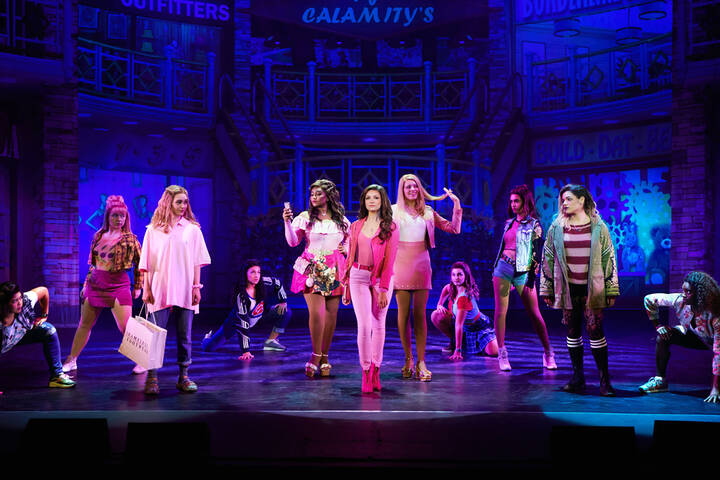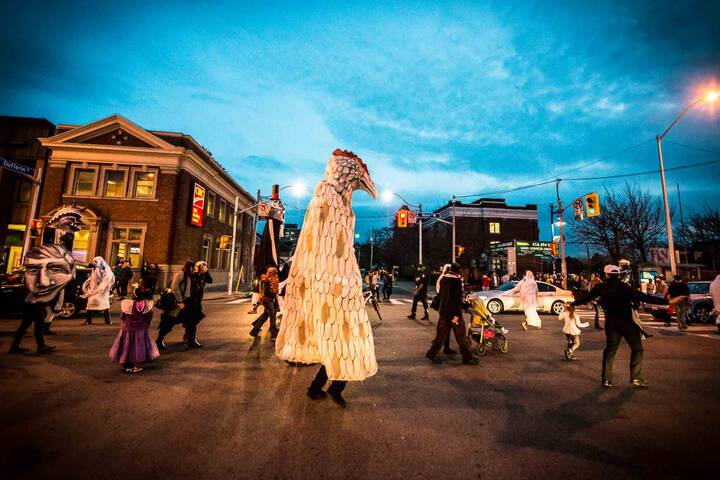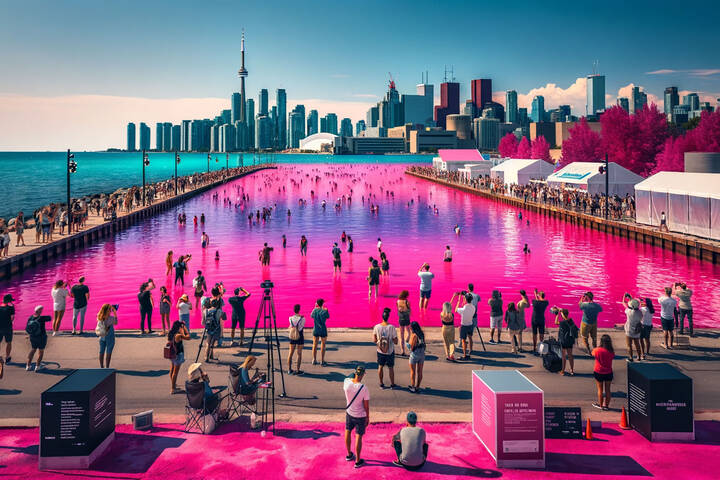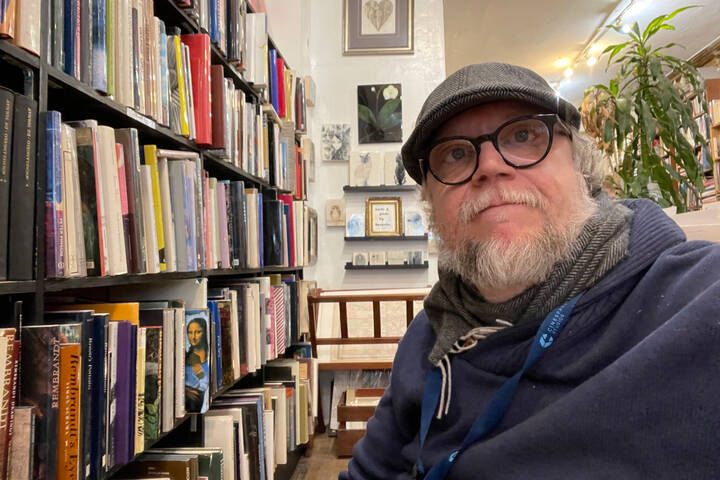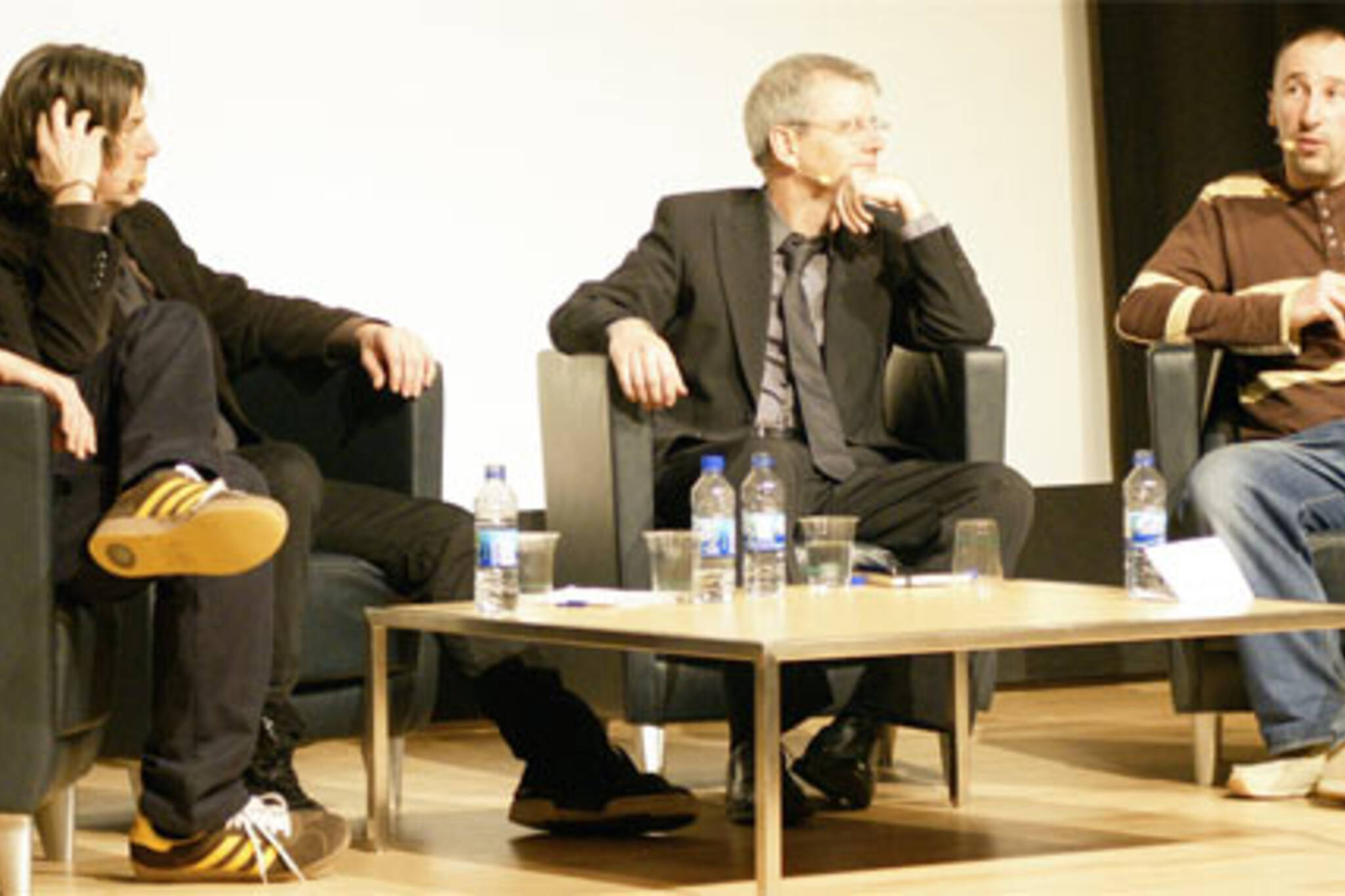
Talking (not Tackling) Street Art at Housepaint
What is the definition of vandalism with regard to street art and graffiti? What is the municipal policy and possible penalties for street artists? As street artists become more enmeshed with the art world, how do they maintain their street credibility? How is street art different from tagging and vandalism? Is street art simply a short cut into the art establishment?
These important questions were the full nelsons of the Wednesday night throw down I attended - between artists and establishment at the ROM's Signy and ClĂŠophĂŠe Eaton Theatre as part of their current exhibition, Housepaint.

Adam Vaughan (Councillor, City of Toronto), Dan Bergeron (aka fauxreel), David Liss (artistic director, MOCCA) and Devon Ostrom (curator, Housepaint) faced off on the above questions in an attempt to shed light, not on the answers but on the perspectives that make them so unanswerable. In truth, I was glad to see that those who went to see the hate being flung between "high" and "low" class had to wait through a lot of the civilized logic being traded on stage. A testament to the character of the panelists, each seemed resigned that divisions of institutional versus street art - namely, those imposed by notions of class (as pointed out by David Liss) - run deep but are still worthy of measured debate.
Though they addressed policies, processes and social aspects of street art, the conversation often returned to the very nature of street art. One of the most evident fault lines of discussion, during Talking Street Art was the perception that street art is a culmination of graffiti, hip hop culture, dissenting youth and poverty.
Given some time to reflect after the panel, Devon Ostrom reiterates a point from the Housepaint exhibition statement: Street art is often associated with graffiti. In fact, since the earliest cave dwellers, people have been drawing in places where they forgot to ask permission first. Hip-hop culture took this tendency and gave the form a massive boost in innovation, technical skill, and style. Almost overnight, bathroom scribbles took a giant leap in evolution, vibrantly turning New York City's subway cars into giant rolling art galleries. "My point being credit is owed, but hip-hop graffiti was not the start of drawing on things."
The current popularization of street art and it's inception to the mainstream had the panel agreeing on the shift in ideologies and practice of individual artists, some of whom have made the leap into gallery and commercial space. For the artists, one of the more important shifts came in the form of civil leniency toward artists who stick to the street. "In some ways the city has actually made a lot of progress in how graffiti and street artists are dealt with," says Devon. "Not too long ago it was not uncommon for artists to be beaten, let alone fined. I personally have a friend who was beaten to the point of internal bleeding by the police. Actually participation in institutional shows can be great for getting artists out of court. Most Judges are well educated and love good art."
Administering the panel was Francisco Alvarez, the Managing Director of the Institute for Contemporary Culture (ICC) at the ROM, "It went very well, with a good variety of perspectives represented. In particular, it was interesting to hear from City Councillor Adam Vaughn how the City is attempting to deal with graffiti while still viewing artistic mural painting as a positive force. Clearly, we did not arrive at a definite answer, it's like asking "what is art?", a question that has been debated endlessly."
Francisco culled the discussion topics from ICC members and the panelists themselves. "Three main themes emerged: Street art and the Municipality, Street art and the mainstream art world, How street artists have evolved since the original of graffiti."
I'm rather amazed and think that it's incredible that Housepaint is really the first exhibition by a major Canadian museum to address street art and it's surrounding issues. An art form that has been developed for decades - and centuries, when considering Devon's earlier sentiments - and practiced world wide. Francisco explains that Housepaint presented the ICC with an opportunity to bridge solid context with innovation. "Our mandate is to present exhibitions and programs that examine cultural, social and/or political issues in societies around the world. In this case, we look at homelessness and poverty through the lens of socially-concerned street artists."
The panel talk was one of the many layers of this ode to street art, including the Housepaint at Tent City - Phase 1 Hug Me Tree installation by Elicser Elliot, the screenings of BOMB IT and NEXT: A Primer on Urban Painting (my particular favourite).
Images by: Roger Cullman
Latest Videos
Latest Videos
Join the conversation Load comments
